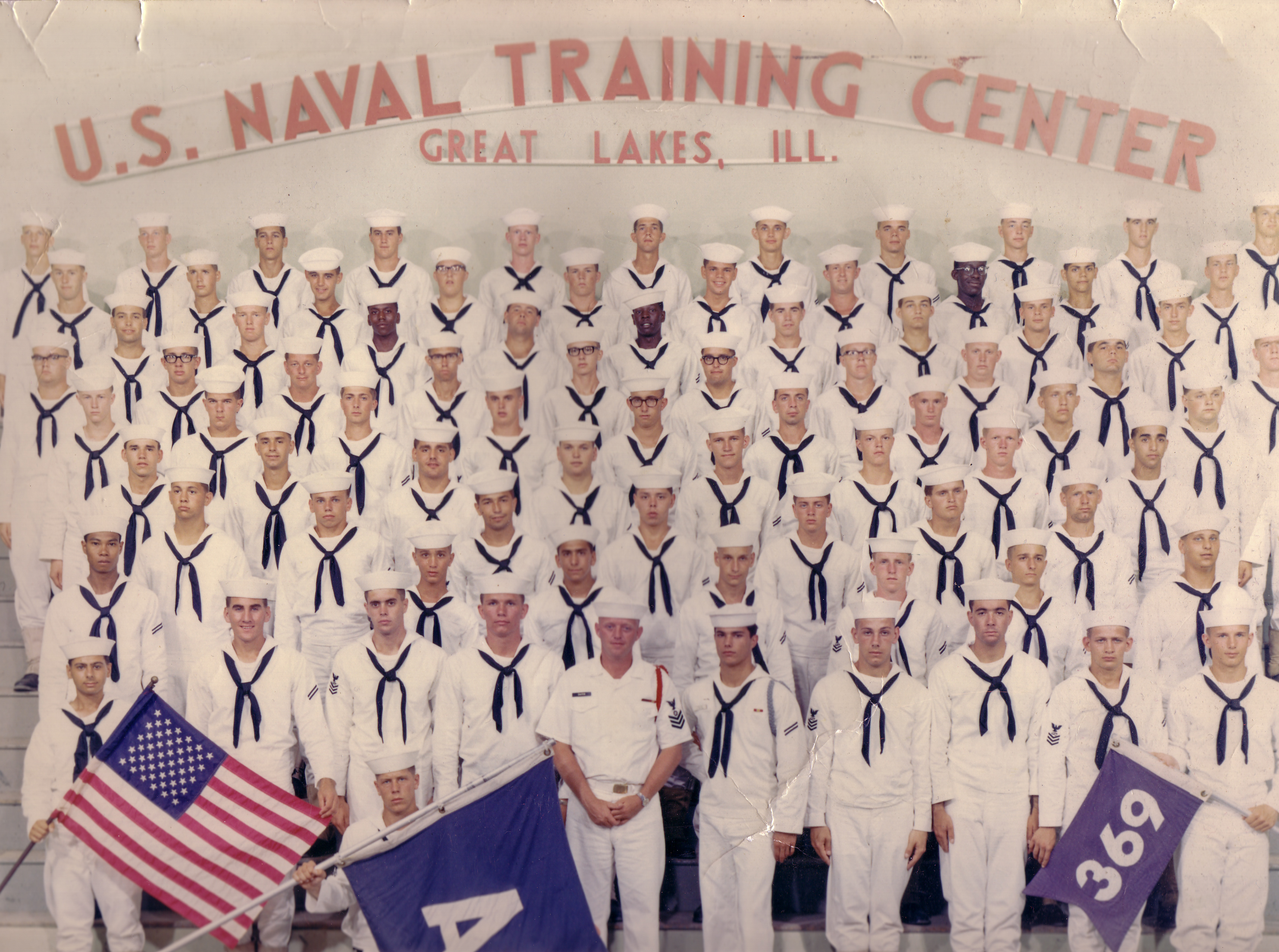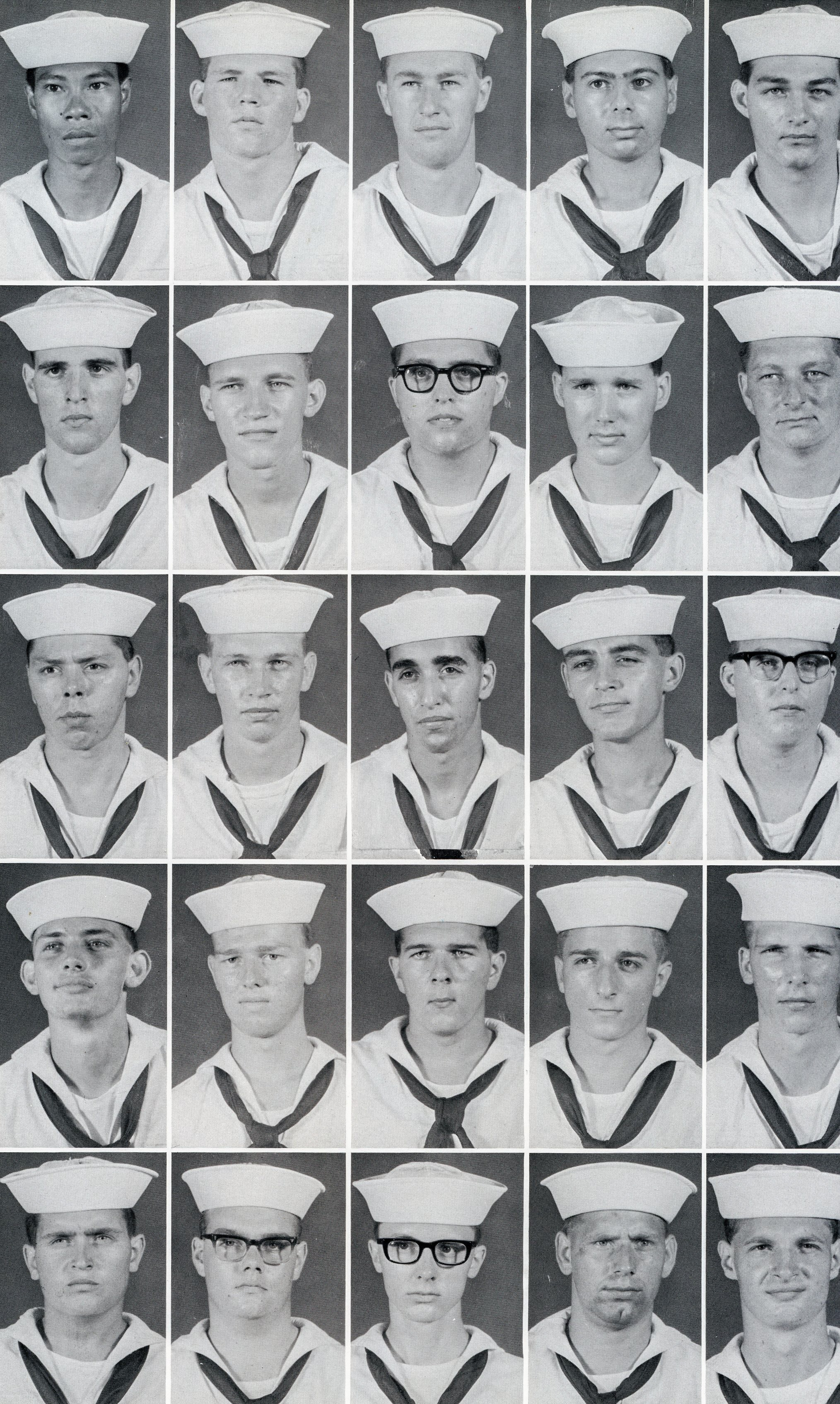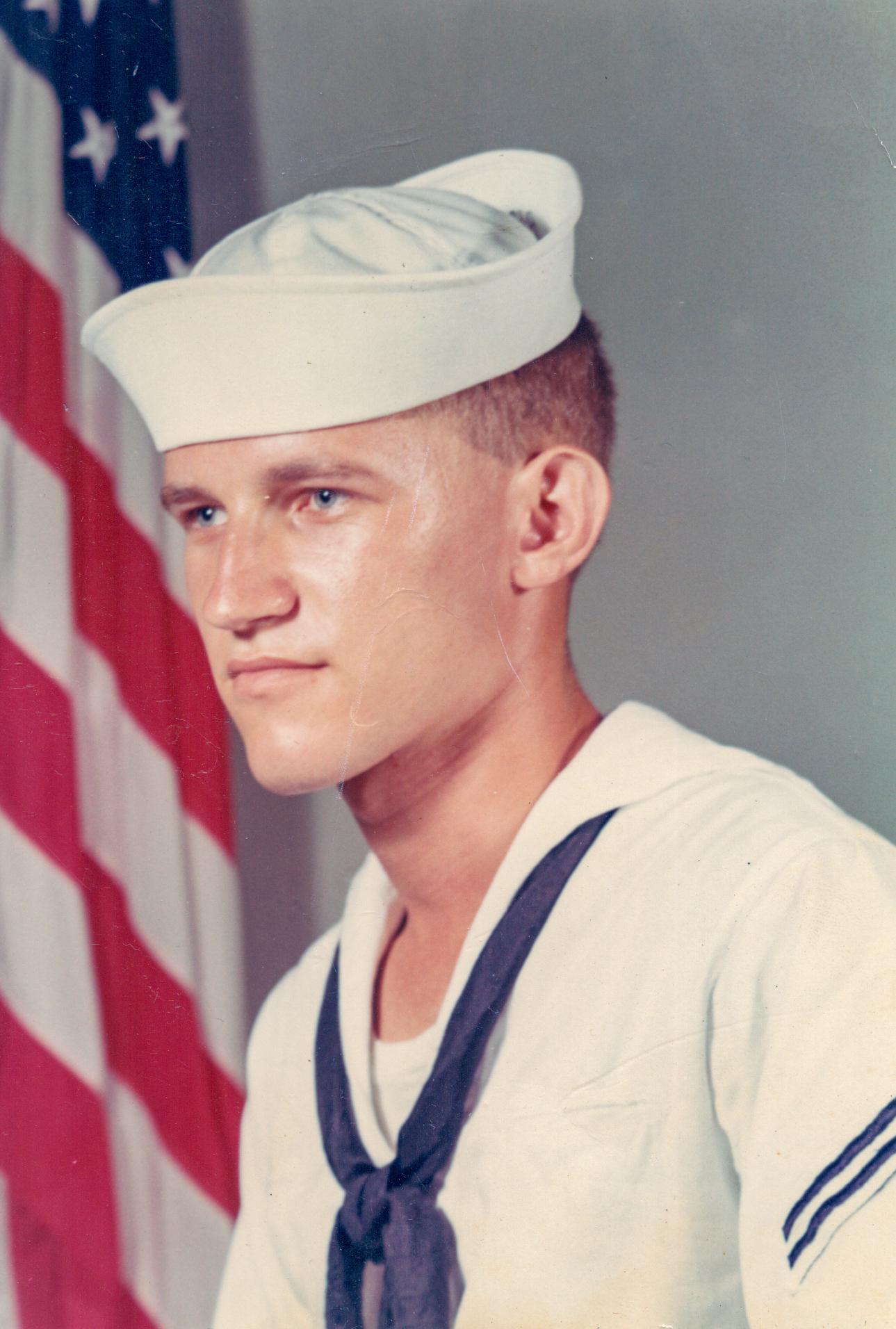The Navy Years - Boot Camp
Fifty years ago in July I arrived at U.S. Naval Training Center in Great Lakes. ILL. The bus pulled up to gates in the middle of night and I remember being herded off and yelled at. It wasn't exactly the same as an orientation week at College. The training ran just under two months and there was a lot to do. The idea was to rework us into sailors and for the most part they were successful.
They took away anything we might have brought with us with the exception of bibles and the clothes were wore. We couldn't wash those clothes and after a while in the summer heat they became quite pungent. This was by design of course and I appreciated getting my brand new uniform. We had the option of shipping our clothing home but most of us just tossed it.
There was lots of standing in line and the common chant was "nuts to butts" if you can picture that in your mind. There was some innovation as we were in line in our skivvies. We were ordered to raise our arms and they would spray us with confiscated deodorant under our arms as we lined up for physicals.

We took tests to determine which rate (job) we were best suited for. I was at an advantage with a degree in Electronics, which resulted in my be assigned to Avionics training in Tennessee for a year.

We were given lots of shots using Jet injectors. These nasty devices could cut you if you flinched and many of us flinched or fainted. I don't know if they are still used because of the danger of blood contamination. I lost a friend in 2013 who contracted Hepatitis from the guns while he served in the Marines. He died in surgery for liver complications.
For some inexplicable reason were all given a massive dose of Bicillin in our buttocks. I assume this was done to kill any STD that might exist. This also resulted in a very sore buttock which made for an amusing sight when we were marching.

Besides learning how to fold underwear I learned that toilet paper rolls from the top, how to march, tie knots, and other valuable life skills.
We spent some time in a pool since a sailor needs to know how to swim. The requirement was to get from one end to the other. We practiced making our pants into floats by tying up the cuffs and even using the dixie cup to help float (wet cotton is air tight). In the pool it was not so hard, in the ocean we would die.
On July 29, 1967 aboard the USS Forrestal off Vietnam a Zuni rocket on a F-4 Phantom misfired impacting an armed A-4 Skyhawk. The resulting fire killed 134 sailors and injured 161. Fire is the most dangerous thing one might encounter at sea.
Needless to say learning how to fight fires was an important part of our training and a lot more important than folding underwear.
We attended a firefighting school which definitely an intense experience. They started us off slowly by lighting huge basins of oil and teaching us how to suppress the flames with a water spray. We had teams of three men, one held the hose, two on the nozzle.
Later it got more interesting. They put us in an enclosed steel structure which had a dividing wall. On one side was a pool of oil and the other was dry. They torched the oil and we entered the structure to put it out. Our nozzle man panicked and let the nozzle go which got rather dicey but luckily the second man controlled it. You couldn't see, breathing was hard but not impossible and it was hot. It is easier to breath in an oil fire
Later they had us walk through a special smoke tunnel in pairs. We were learning about Fire Classifications and this building was filled with Class A smoke, the type you get from a a campfire. We couldn't see and had to link arms. It was choking eye stinging smoke. At the end we were supposed to unlink our arms but my partner panicked and held on. The instructors made a comment about how much we loved each other and gave us the chance to go through again. On this round I shoved the guy off.
After so much excitement the final training was experiencing the joys of tear gas. We were given masks and shown how to use them. The masks had been used before and contained residues of the gas so as soon as we donned them our eyes began to burn.
We were led into a room where they dropped a pellet into a heater which released the gas. Then we were told to remove the masks. This has the effect of unplugging your nostrils of mucus, prodigious amounts of mucus. My only consolation is that I think the Marines are made to sing the Marine Hymn, we were led out.
Thankfully I never had to use my fire training. Unlike the USS Forrestal or the USS Enterprise, the carriers I sailed on had no major fires.
They took away anything we might have brought with us with the exception of bibles and the clothes were wore. We couldn't wash those clothes and after a while in the summer heat they became quite pungent. This was by design of course and I appreciated getting my brand new uniform. We had the option of shipping our clothing home but most of us just tossed it.
There was lots of standing in line and the common chant was "nuts to butts" if you can picture that in your mind. There was some innovation as we were in line in our skivvies. We were ordered to raise our arms and they would spray us with confiscated deodorant under our arms as we lined up for physicals.

We took tests to determine which rate (job) we were best suited for. I was at an advantage with a degree in Electronics, which resulted in my be assigned to Avionics training in Tennessee for a year.

We were given lots of shots using Jet injectors. These nasty devices could cut you if you flinched and many of us flinched or fainted. I don't know if they are still used because of the danger of blood contamination. I lost a friend in 2013 who contracted Hepatitis from the guns while he served in the Marines. He died in surgery for liver complications.
For some inexplicable reason were all given a massive dose of Bicillin in our buttocks. I assume this was done to kill any STD that might exist. This also resulted in a very sore buttock which made for an amusing sight when we were marching.

Besides learning how to fold underwear I learned that toilet paper rolls from the top, how to march, tie knots, and other valuable life skills.
We spent some time in a pool since a sailor needs to know how to swim. The requirement was to get from one end to the other. We practiced making our pants into floats by tying up the cuffs and even using the dixie cup to help float (wet cotton is air tight). In the pool it was not so hard, in the ocean we would die.
On July 29, 1967 aboard the USS Forrestal off Vietnam a Zuni rocket on a F-4 Phantom misfired impacting an armed A-4 Skyhawk. The resulting fire killed 134 sailors and injured 161. Fire is the most dangerous thing one might encounter at sea.
Needless to say learning how to fight fires was an important part of our training and a lot more important than folding underwear.
We attended a firefighting school which definitely an intense experience. They started us off slowly by lighting huge basins of oil and teaching us how to suppress the flames with a water spray. We had teams of three men, one held the hose, two on the nozzle.
Later it got more interesting. They put us in an enclosed steel structure which had a dividing wall. On one side was a pool of oil and the other was dry. They torched the oil and we entered the structure to put it out. Our nozzle man panicked and let the nozzle go which got rather dicey but luckily the second man controlled it. You couldn't see, breathing was hard but not impossible and it was hot. It is easier to breath in an oil fire
Later they had us walk through a special smoke tunnel in pairs. We were learning about Fire Classifications and this building was filled with Class A smoke, the type you get from a a campfire. We couldn't see and had to link arms. It was choking eye stinging smoke. At the end we were supposed to unlink our arms but my partner panicked and held on. The instructors made a comment about how much we loved each other and gave us the chance to go through again. On this round I shoved the guy off.
After so much excitement the final training was experiencing the joys of tear gas. We were given masks and shown how to use them. The masks had been used before and contained residues of the gas so as soon as we donned them our eyes began to burn.
We were led into a room where they dropped a pellet into a heater which released the gas. Then we were told to remove the masks. This has the effect of unplugging your nostrils of mucus, prodigious amounts of mucus. My only consolation is that I think the Marines are made to sing the Marine Hymn, we were led out.
Thankfully I never had to use my fire training. Unlike the USS Forrestal or the USS Enterprise, the carriers I sailed on had no major fires.
 |
| USS Forrestal on fire, the worst US carrier fire since WWII; USS Rupertus (DD-851) maneuvers to within 20 ft (6 m) to use fire hoses. |




Comments
Post a Comment
I'd like to hear from you